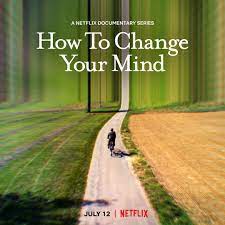By Dom Cioffi
According to the CDC, fentanyl is now the No. 1 cause of death for Americans between those aged 18-45. The drug has surpassed suicide, Covid, and car accidents to take the top position.
In 2021, over 100,000 people died from overdoses in the U.S.; two thirds of those deaths were from fentanyl. That comes out to roughly one person dying from the drug every 9 minutes.
These are staggering statistics. Some politicians have recognized the seriousness and are asking the government to take drastic measures. In fact, the attorney general in Florida recently requested that the President classify fentanyl as a “weapon of mass destruction.”
If you’re unfamiliar with the drug, simply do a quick Google search and you’ll see a massive amount of press dedicated to recent deaths, drug busts, and seizures of large quantities as it enters the United States. You’ll also learn that most of the fentanyl coming into our country was originally manufactured in China and then trafficked through our borders via Mexico.
Fentanyl is relatively new on the illegal drug scene, but it’s been around in clinical use for decades. Originally synthesized in 1959 in Belgium, the first commercial application of the drug became available in 1968. However, in the 1990s the drug became more widely used in patch form to aid cancer patients during stretches of extreme pain.
And if you’re curious how strong it is, scientists estimate that fentanyl is 100 times stronger than morphine and 50 times stronger than heroin.
I was lucky enough to be on fentanyl for three months while I was being treated for cancer. However, I say “lucky” with some reservation.
The fentanyl did its job by subduing the immense pain and suppressing my need to cough (the cancer I had was in my throat and any coughing — or swallowing, for that matter — triggered agonizing bouts of pain).
Being on high doses of fentanyl was no picnic. I couldn’t discern the difference between being awake and dreaming and many times got frustrated when I confused the two. Some might think that sounds interesting, but I can assure you, while it numbs everything, it also sucks the life out of you.
I was thankful that modern science had developed something powerful enough to help me cope with that situation, but it came at a price. After my treatments were over and I was beginning to heal, I had to slowly titrate off the drug. I can tell you that the withdrawals from opioids were almost as bad as the radiation and chemotherapy that saved my life.
The easiest way to describe fentanyl withdrawals is to imagine that you have the worst flu possible every day for months. Your stomach hurts, your back aches, your body twitches, your head pounds relentlessly, you can’t eat, you can’t sleep, it’s hard to think clearly, and you’re ridiculously cold all the time. And there’s no relief from the symptoms.
I struggled every day to simply stay sane enough to keep going. I couldn’t think about the future or what tomorrow might bring. All I could focus on was getting through the next hour.
This went on for nearly three months.
And then one day, while I was out for a walk, I stopped and turned my head to the sky. The sun was shining, and I could feel the warmth on my face. And in that moment, it dawned on me that I didn’t feel sick for the first time in six months. Tears started running down my cheeks as the reality that I was actually getting better began to take hold.
I’ve never forgotten that experience and I try to remember how immense the struggle was when I see a homeless person on the corner begging for money, knowing they may be an addict and fighting their own withdrawals.
I had everything to live for: I had a wife and son who relied on me; I had an extended family who loved me; I had a job waiting for me. Many addicts are devoid of these luxuries, so when faced with going through the withdrawals to get better, they have little to lean on or hope for even if they do manage the herculean task of getting to the other side of it. That is a horrible position to be in.

This week’s feature, a four-part mini-series presented by Netflix called “How to Change Your Mind,” is also about drugs, but in this case it’s about the therapeutic effects of a different class of substances known as hallucinogens.
Based on the best-selling book by Michael Pollan, “How to Change Your Mind” delves into the remarkable scientific revolution happening over the last decade as medical professionals begin to tap into the therapeutic benefits of mind-altering drugs.
Check this one out if you’re at all curious about this new frontier of medicine. Pollan and his compatriots make a compelling case, even though no one really knows. A trippy “B” for “How to Change Your Mind.”
Got a question or comment for Dom? You can email him at [email protected].



